Red leaf houseplants could be exactly what you’re looking for, depending on the aesthetic and design of your house and apartment.
Thankfully, there’s no shortage of red leaf houseplants to choose from, and this article will choose more than ten red leaf plants for you to choose from.
Caladium
Caladium houseplants have red and green leaves with a touch of white in the middle.
You don’t have to worry about finding a spot too sunny for your caladium because they typically like to be in the shade. Plus, they like moist soil, so the shade doesn’t cause water to evaporate too much.
Even though caladiums don’t like sunlight, you should keep your caladium warm because it is a tropical plant. Don’t keep it on the windowsill when there’s a chilly temperature!

Flamingo Plant
Flamingo plants have striking red leaves that will brighten any space, large or small. They add some beautiful texture to your aesthetic with leaves that look almost waxy.
Your flamingo plant is going to love all the humidity it can get, so don’t worry if your house always feels a little stuffy.
You won’t have to be on top of watering your flamingo plant because you only need to water it when the soil feels dry.
You will, however, need to fertilize your flamingo plant more often than other kinds of house plants, which can be a chore for some.
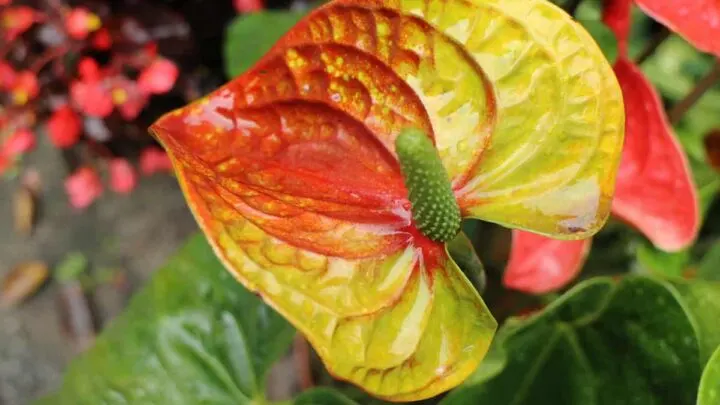
Coleus
Coleus plants have a beautiful color palette where there are neon green leaves with a bright red center. There’s no set size for coleus plants, so you can find something that fits your wants.
Coleus plants are easy to take care of, so there isn’t much effort required to have your coleus plants sprawl across wherever they’re planted.
Just make sure that you give coleus plants some shade because they don’t like full sunlight. It’s also hard to overwater coleus because they like to be kept moist.

Ti Plant
Ti plants look almost like a fern – just with pale red leaves.
Ti plants can grow to be large, so people often plant them outside to be part of the home’s landscaping.
You can still plant a Ti plant in large pots just as you would a fern, but make sure you can put the pot somewhere where your Ti plant can get full sunlight.
You’ll also need to make sure that your Ti plant stays in an area above 50 degrees. You can easily grow a Ti plant during the winter; you need to make sure you keep it away from the window and cold spots in your home.

Nerve Plant
Nerve plants look just like the name suggests veins and nerves. The red parts of the leaves give some interest to the plant.
Nerve plants are great as houseplants because they’re sold in small pots for households.
Despite being known as a houseplant, you’ll have to work to keep your nerve plant happy and healthy.
A terrarium is the best place for your nerve plant because they thrive in high humidity and shade. These plants are native to tropical forests and grow in the shade of larger trees, so keep that in mind if you choose this plant!
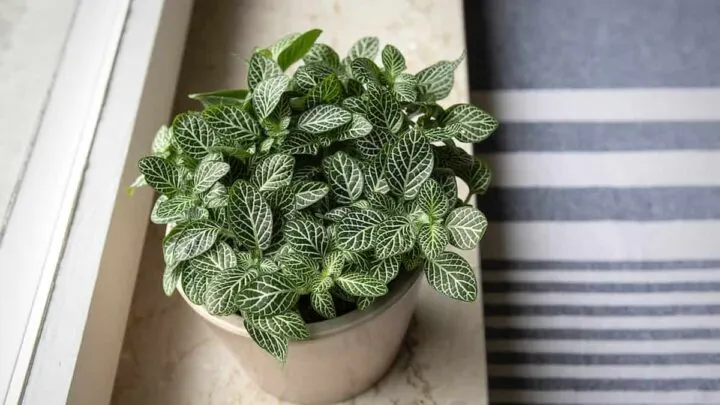
Polka Dot Plant
I don’t want to burst your bubble, but polka dot plants aren’t covered in red polka dots. Instead, the red in the leaves looks like splatter or splotches.
Your polka dot plant will need to be kept watered, so don’t treat this houseplant like you would a succulent. The soil needs to stay wet.
Too much sunlight can cause your polka dot plant leaves to fade, so make sure that your plant is somewhere that has at least some shade.
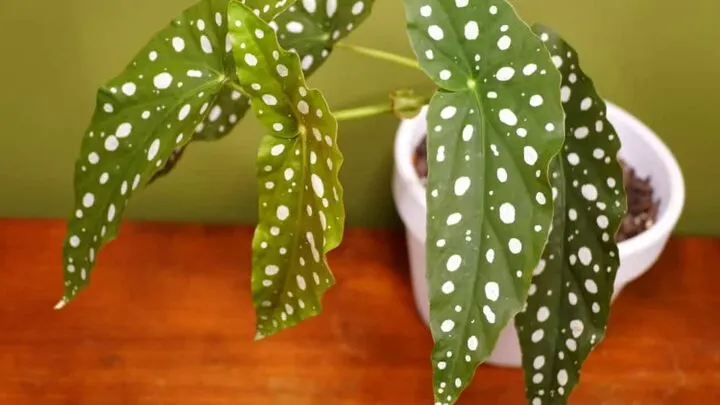
Angel Wings
Another type of begonia, angel wings, has green leaves with hints of red for a more subtle way to bring a red leaf house plant into your home.
Angel wings are interesting because the tops of the leaves are green, but the back of the leaves are light red.
The angel wing house plant is also a great option because it can be small for a desk or windowsill plant, but you can also grow it like a shrub. Taken care of correctly, your angel wings begonia can grow up to almost five feet tall!
Angel wings are easy to care for because you can put them into an area with low indirect light and watch them grow!
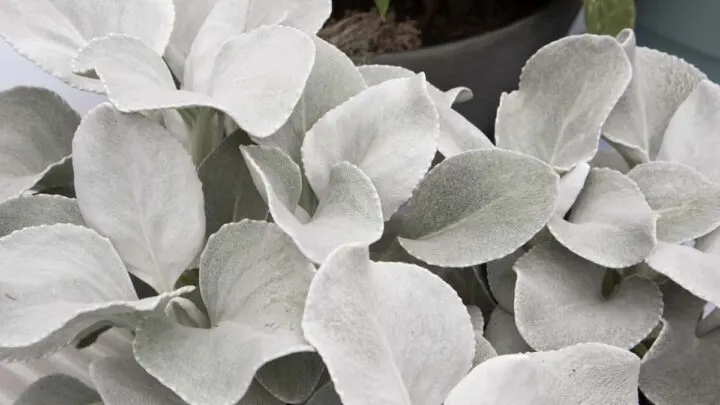
Pencil Cactus
If you want a plant that will pop in any room, then the pencil cactus is the perfect choice for you!
The pencil cactus is also called the firestick plant – for a good reason!
Pencil cacti look like what it sounds: pencil-like stems that grow upwards. The name firestick comes in because the sticks are a bright orangey-red color and may remind you of flames in a fire.
The pencil cactus is a type of succulent, so you know that it will be easy to care for. The pencil cactus will be happiest in bright light and low humidity. Like with most succulents, you only need to water this plant when the soil feels dry.
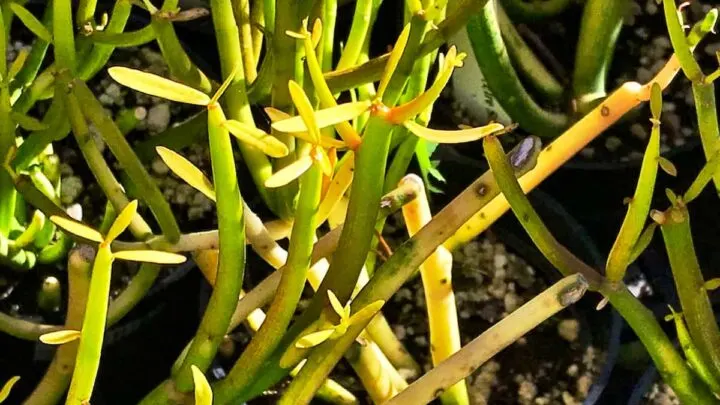
Rex Begonia
Begonias are always popular with people who love plants, and the rex begonia is a striking red-leafed houseplant that is sure to draw attention from visitors.
The rex begonia is a relatively easy houseplant to care for as long as you can remember to regularly your plant. Rex begonias don’t like to be too wet or too dry, so you can water them whenever the soil begins to feel dry.
Your rex begonia will need consistent light, so you may notice that your rex begonia grows slower in the winter. It may also go dormant, but that doesn’t mean it has died – don’t go throwing it away!
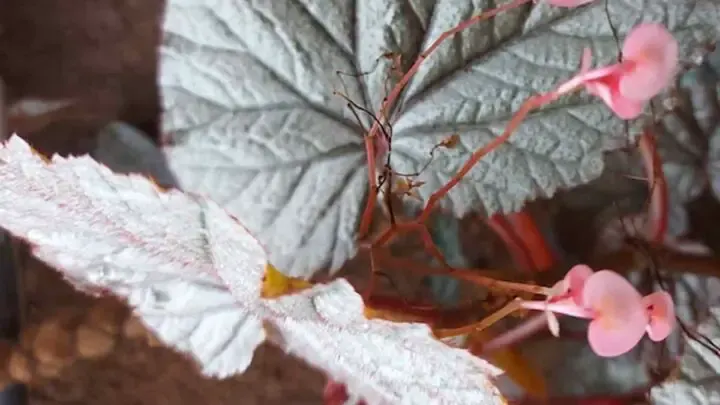
Japanese Barberry
The Japanese barberry is an interesting addition to this list because it is a beautiful plant that is categorized as invasive. You might not be able to find it in some states if you are in the United States!
If you are growing your Japanese barberry inside, you don’t have to worry as much about invasion as if it was outside. The Japanese barberry is known for dropping tons of seeds, which causes the plant to grow wildly and take over.
The Japanese barberry can grow up to four feet tall, so you’ll certainly have a massive indoor houseplant on your hands.
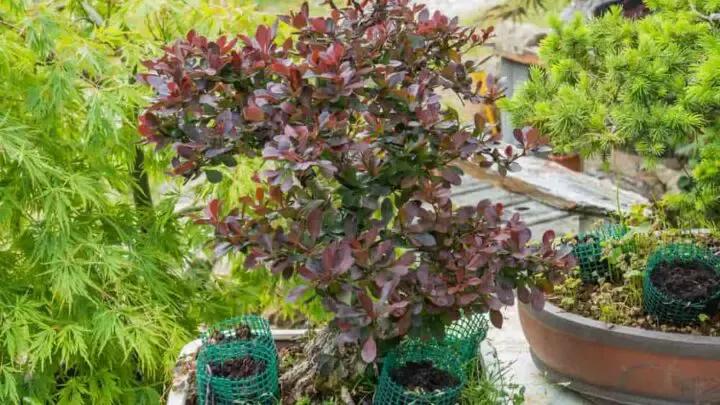
Croton
The croton plant leaves lean scarlet than true red, so that this plant can be a new addition to your house and décor!
You’ll need to keep your croton in enough sunlight for the leaves to be as bright as possible. Less sunlight means that the leaves will be more dull, so you may have to move your croton around to find the best location for it.
One interesting tidbit about crotons is that you’ll need to dust them! The leaves attract dust like you wouldn’t believe, so your plant can turn into a dust trap within a month!
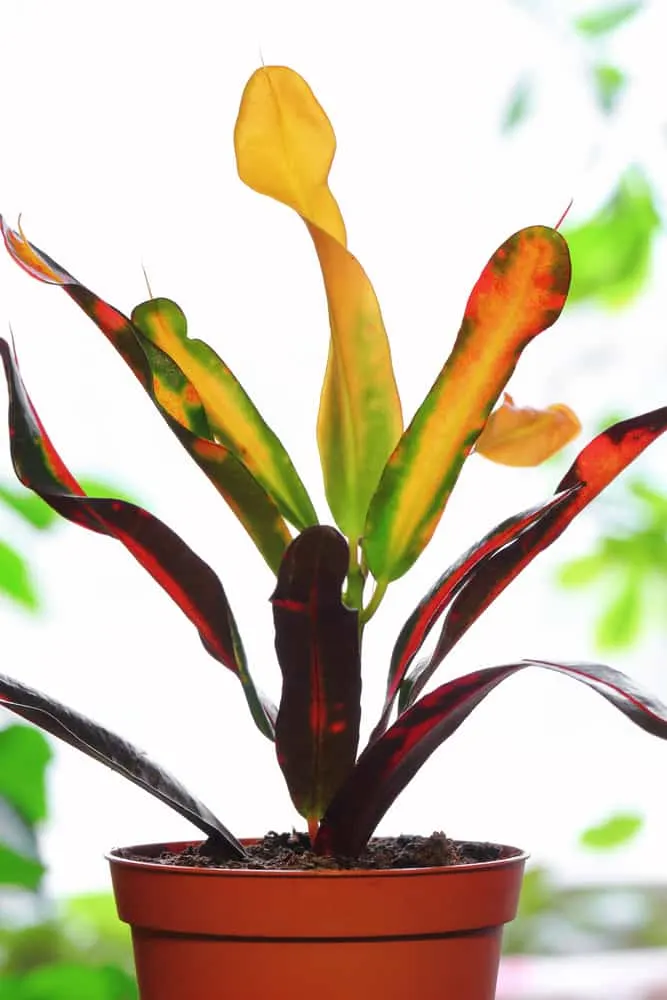
Poinsettia
Of all the plants on this list, you might be the most familiar with poinsettia, especially if it is around Christmas time!
Although most people think of poinsettia as a winter plant, you should keep the poinsettia in temperatures around 70 degrees. This certainly isn’t a temperature most people think of in the winter!
Your poinsettia will return to its green state, and you can care for the plant to turn red again for the holidays, but you’ll have to do your own research there. It’s certainly going to be a process if you want to do it, so you may be someone who wants to take the easy route and purchase a new poinsettia every year.
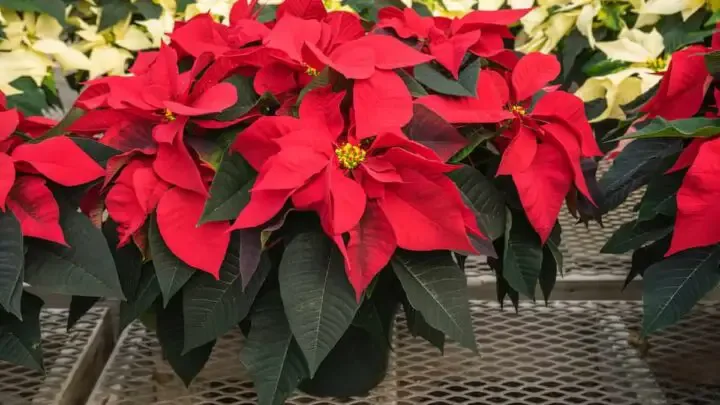

Hi there, my name is Allie and welcome to my blog; GareningWithAllie!
Much of what you see written here is just our personal experiences with gardening. Along with the content I write here, there is also a unique collection of gardening topics covered by some of our close friends. I hope you find everything you read here to be helpful, informative, and something that can make your gardening journey the most lovely experience ever! With that said, Happy Gardening!
